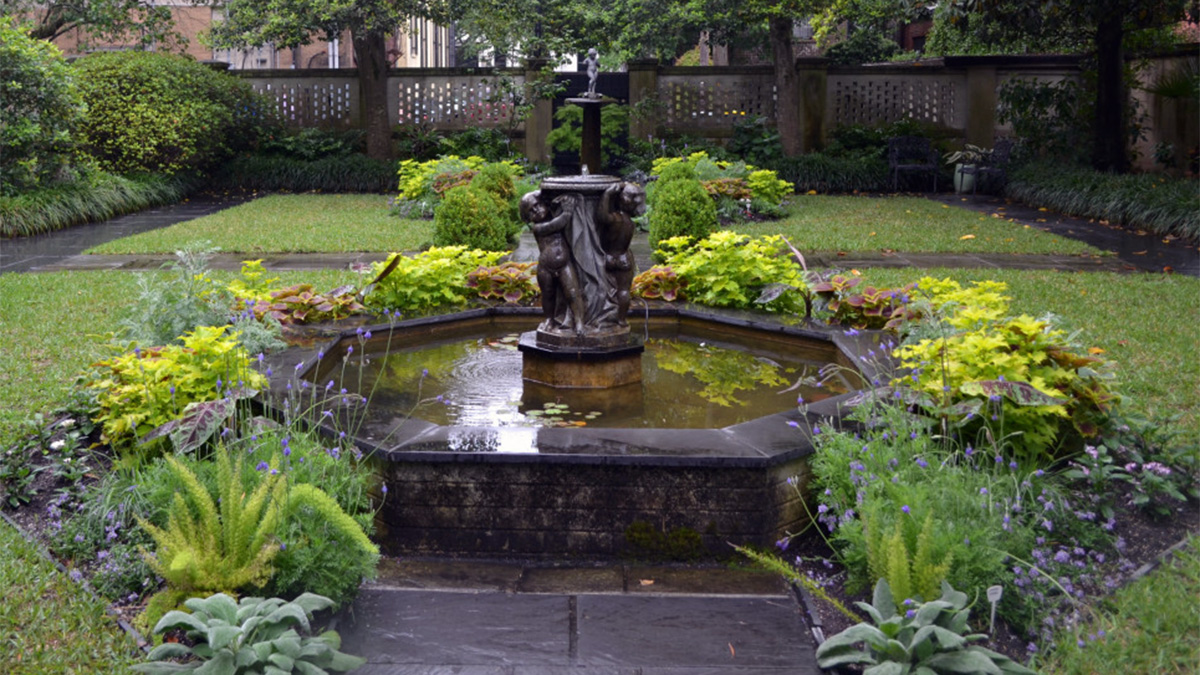Best Plants for Small Ponds & Mini Water Gardens

Small ponds and mini water gardens may be compact, but with the right plants, they can become vibrant, thriving garden focal points. Whether you’re working with a tabletop bowl, container pond, or a small in-ground feature, selecting the right aquatic plants can make all the difference. In this article we’ll be discussing the best options for beauty, balance, and easy maintenance.
Why plant selection matters in small water gardens
In smaller ponds or container water gardens, every plant makes a visual and ecological impact. With limited space, it’s essential to choose species that won’t quickly outgrow their environment. The right combination of plants helps maintain water clarity, supports beneficial wildlife, and enhances the overall design.
Balanced planting also ensures healthy oxygen levels and provides natural filtration. By choosing compact and well-behaved varieties, you can avoid overcrowding and reduce the need for constant maintenance. A thoughtful selection creates a miniature ecosystem that’s both beautiful and self-sustaining.
Floating plants for surface beauty and shade
Floating plants are ideal for covering the water’s surface, reducing algae, and offering a cooling effect. One popular choice is water lettuce, which forms attractive rosettes that float freely. It’s fast-growing and offers good surface coverage without requiring planting.
Water hyacinth adds bold, spiky foliage and occasional purple blooms. Though vigorous, it can be managed easily in contained ponds. Duckweed is another option, prized for its tiny, clover-like leaves that form a delicate carpet over the water.
Azolla, often called mosquito fern, is a small floating fern that spreads quickly and helps fix nitrogen in the water. All of these plants serve an important role in shading the pond, which helps maintain a stable water temperature and keeps algae growth in check.
Marginal plants for edges and shallow zones
Marginal plants thrive in shallow water along the pond’s edge, softening the transition between land and water. Dwarf papyrus adds a tropical feel with its graceful, umbrella-like heads and works well in containers or mini pond baskets. Its compact size is perfect for small-scale settings.
Miniature cattails bring vertical interest without overwhelming limited spaces. These offer structure and look striking when reflected in still water. Golden sweet flag is another great choice, with grassy yellow-green leaves that brighten pond edges and grow well in shallow water.
Pickerel rush, particularly dwarf varieties, adds a vertical pop of blue or purple flowers. Creeping Jenny spills beautifully over edges and into the water, adding texture and a bright green trailing effect that softens hard lines.
Submerged plants for water clarity and oxygenation
Submerged plants are often overlooked, but they play a key role in maintaining clear water and supporting aquatic life. Anacharis, also known as Elodea, is one of the easiest oxygenators and grows well submerged in small ponds. It absorbs excess nutrients, helping reduce algae.
Hornwort is a hardy, fast-growing submerged plant that doesn’t need to be rooted. Its feathery foliage floats in the water column and provides habitat for small aquatic animals. Dwarf sagittaria is a grass-like plant that grows in shallow water and forms attractive clumps.
Rotala is another fine-textured submerged option often used in aquascapes. While a bit more delicate, it adds movement and a refined touch beneath the water’s surface.
Bog plants for moisture-loving accents
Bog plants thrive in saturated soil at the edge of ponds or in overflow areas. Marsh marigold is an early spring bloomer with cheerful yellow flowers and glossy leaves. It adds brightness to damp areas and supports pollinators.
Cardinal flower produces tall spikes of vivid red blooms that attract hummingbirds. It prefers wet feet and can be planted in shallow water or adjacent soggy soil. Dwarf irises bring compact height and colorful blooms without overwhelming the planting area.
Blue-eyed grass, despite its name, is actually a small iris with star-shaped flowers. It works well along pond borders and adds subtle texture with narrow leaves and soft lavender blooms.
Plants to avoid in small ponds
While many aquatic plants are beneficial, some can quickly take over limited space. Large water lilies or overly aggressive species like cattail (Typha latifolia) can outgrow a mini pond within a season. Fast spreaders such as water hyacinth or duckweed should be used sparingly and monitored regularly.
Invasive plants like parrot’s feather or purple loosestrife should be avoided entirely, as they can escape cultivation and harm natural ecosystems. It’s also best to avoid large-leaved tropicals unless you’re growing in a sizable container. Researching growth habits before planting helps prevent costly and frustrating removals later on.
Tips for planting and maintaining small water garden plants
Choosing the right container or planting basket helps control root spread and keeps maintenance manageable. Use shallow aquatic pots or mesh containers filled with gravel or aquatic soil to keep plants secure. For floating plants, no substrate is needed, just let them drift.
Be mindful of each plant’s sun and water depth requirements. Most aquatic plants need full sun to bloom well, while some tolerate partial shade. Regular maintenance includes thinning fast growers, removing dead leaves, and checking water levels.
In colder climates, some tropical or tender plants will need to be brought indoors or treated as annuals. Others, like hardy iris or dwarf rush, can overwinter in the pond with minimal care. Monitoring growth and adjusting placement ensures a healthy balance throughout the season.
Design ideas using small aquatic plants
Layering different types of aquatic plants creates a natural, dynamic look. Taller marginal plants go in the background or center of a round container, while shorter or trailing varieties are placed near the edges. Floating plants can be grouped in clusters to soften reflections.
For small water features like bowl ponds or patio containers, choose a limited palette of textures and colors to avoid visual clutter. Add decorative elements like smooth stones, driftwood, or mini fountains to create focal points. Combining function and beauty makes your mini water garden a relaxing highlight in any outdoor space.
Wildlife-friendly features can be added by placing flat stones at the water’s edge for frogs or using plants that attract beneficial insects. Even the smallest pond can support a tiny ecosystem when thoughtfully planted and maintained.
Conclusion
Creating a lush and inviting mini water garden is all about choosing plants that thrive in smaller spaces. With thoughtful selection and a mix of floating, marginal, and submerged species, even the tiniest pond can support healthy ecosystems and eye-catching design. Whether you’re new to water gardening or simply working with limited space, these compact aquatic plants offer big rewards.
